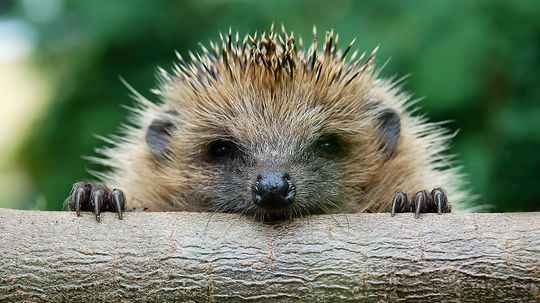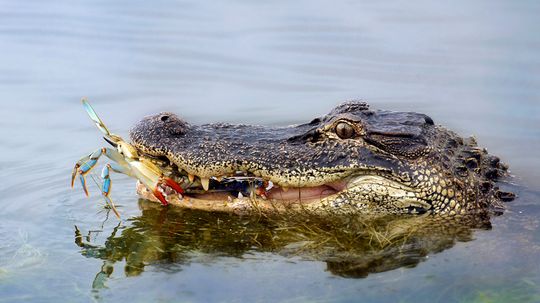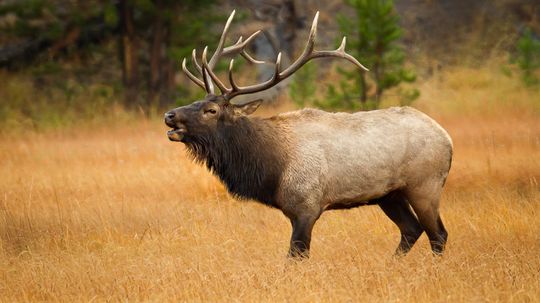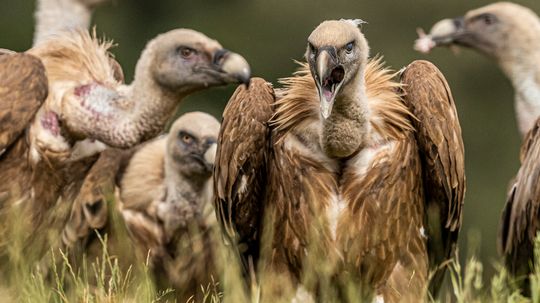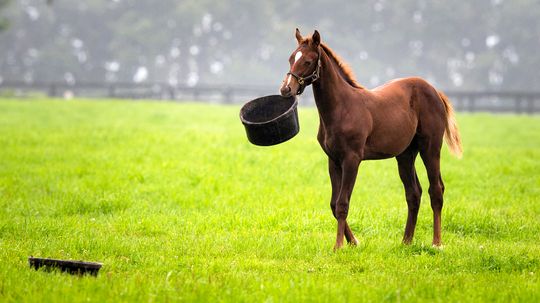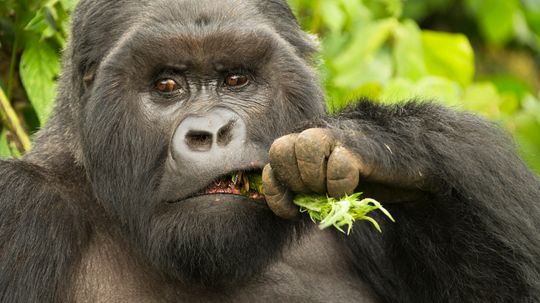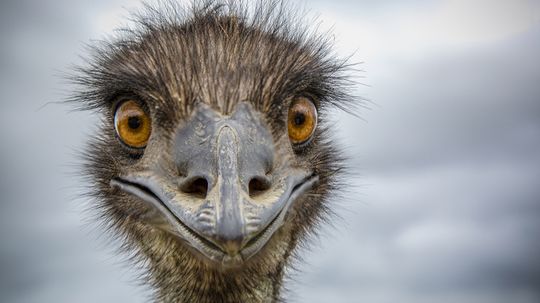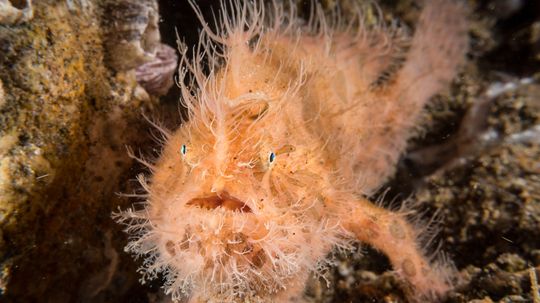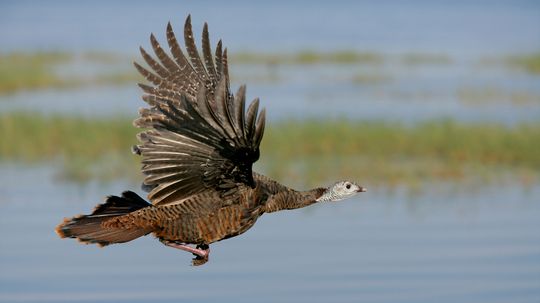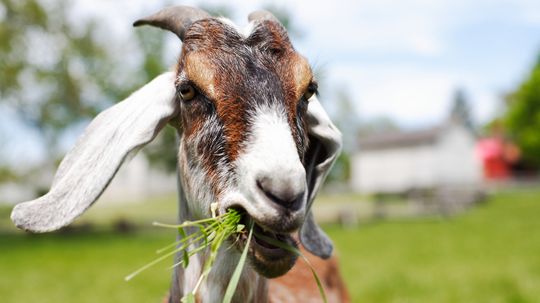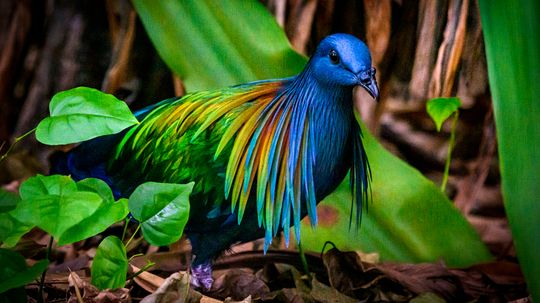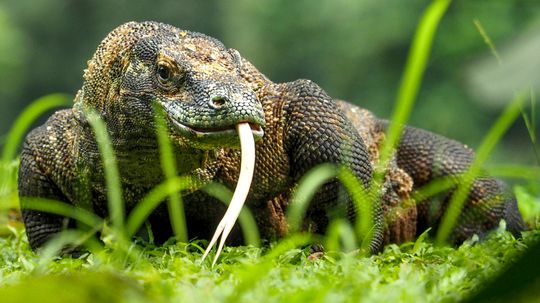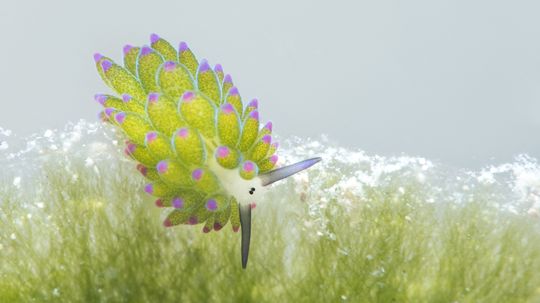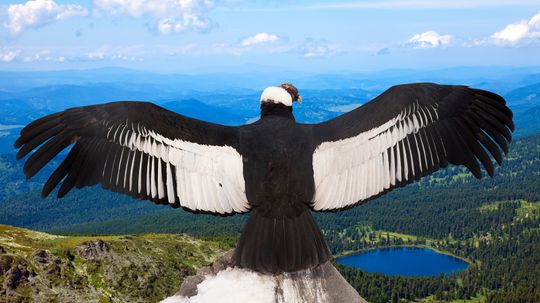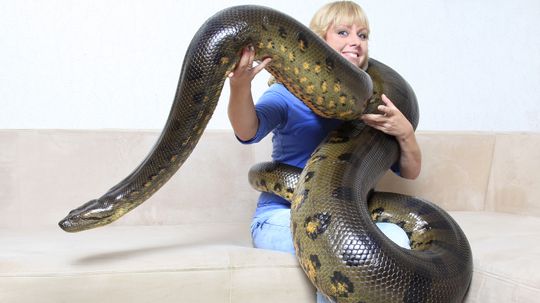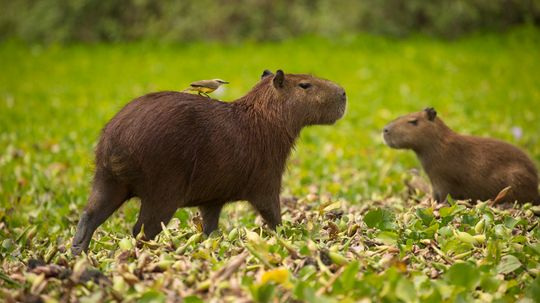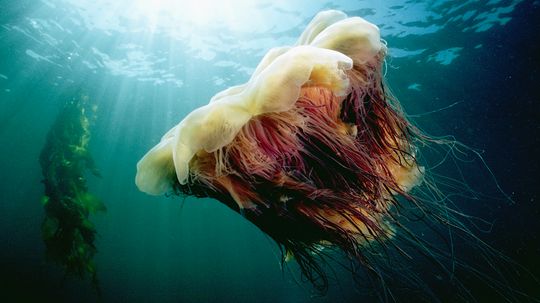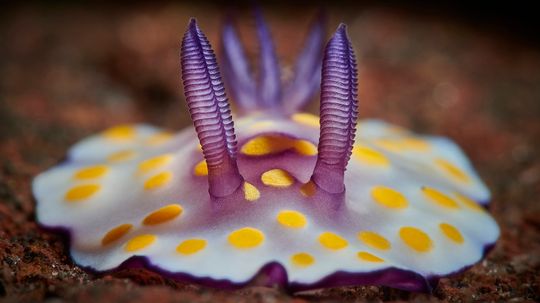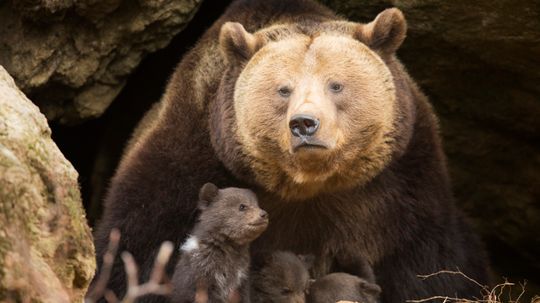Wild Animals
Whether they crawl, fly, swim, slither, walk, run or pounce, wild animals rely on their instincts. Read about all kinds of wild animals, mammals, birds, fish, insects, reptiles and amphibians.
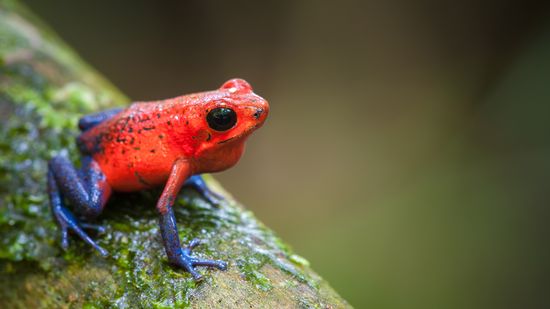
12 Colorful Frog Species: From Tie-dyed Designs to Rare Hues
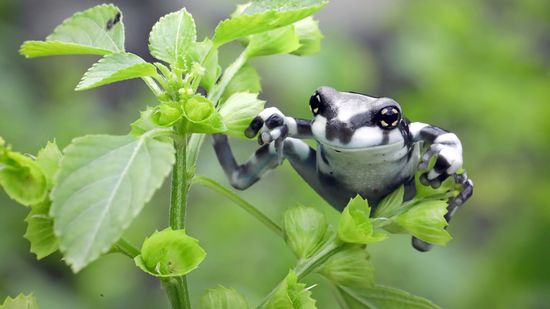
Amazon Milk Frog: Named for Its Defense, Not Its Color

The Red-eyed Tree Frog Has Extremely Sensitive Skin

10 Red Butterfly Species Found From India to Florida to Europe
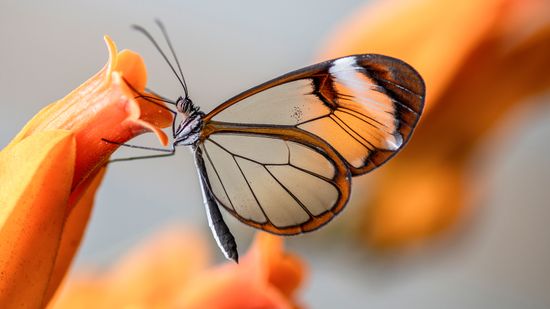
How the Glasswing Butterfly Flutters (Almost) Invisibly
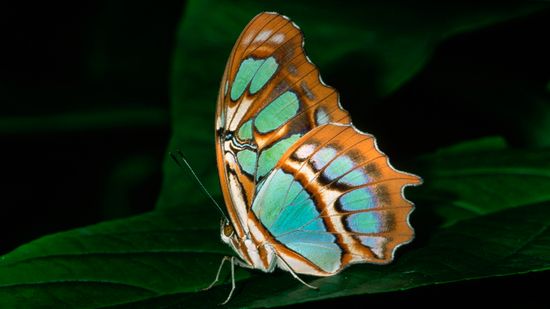
6 Green Butterfly Species Blending in With Their Environments
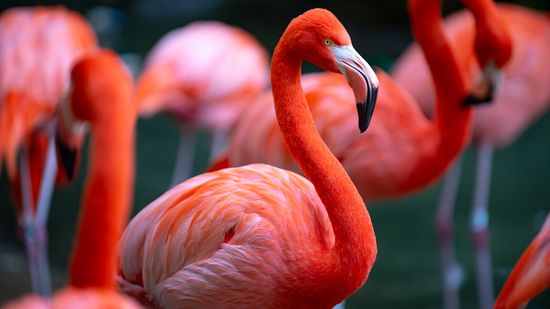
What Is a Group of Flamingos Called? Not a Flock, Another 'F' Word
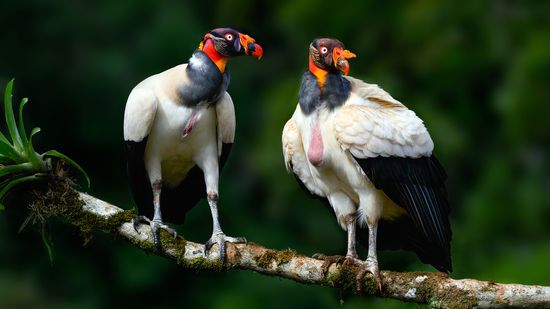
7 Ugliest Bird Species: Evolutionary Qualities That Aren't So Pretty

What's a Group of Ravens Called? Not a Murder (That's Crows)

What Is a Group of Fish Called? Not Always a School
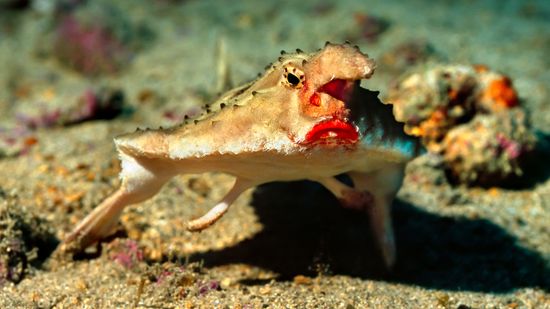
10 Weirdest Fish in the World: Batfish, Hairy Frogfish, and More

10 Scariest Fish Lurking in Rivers, Deep Ocean Waters, and Shells
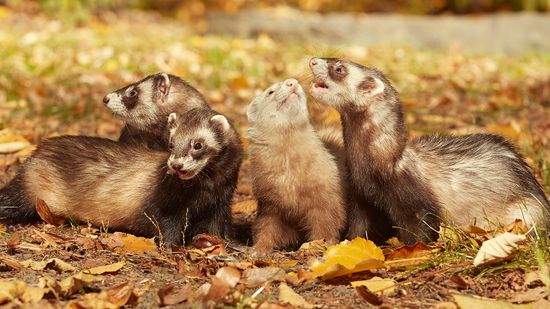
What Is a Group of Ferrets Called? You're Such a Busybody
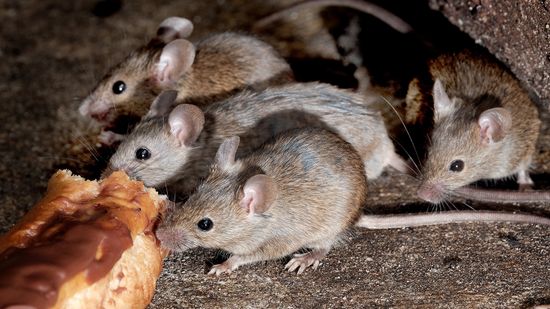
What Is a Group of Mice Called? Not Always a Colony
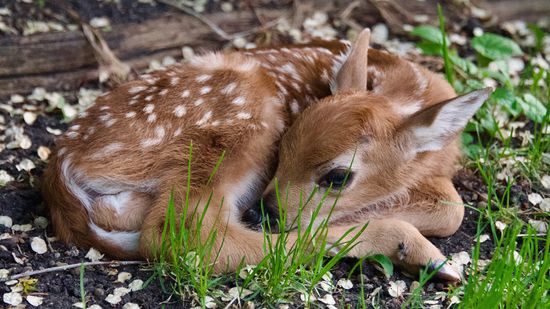
What Is a Baby Deer Called? (Aside From Adorable)
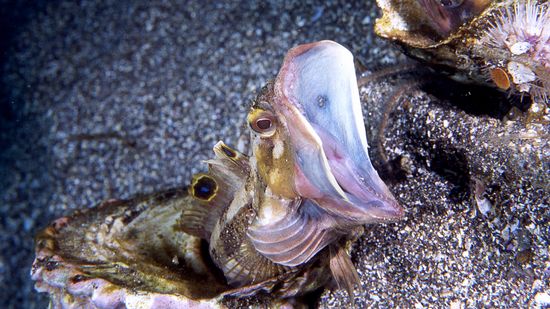
10 of the Scariest Sea Creatures Lurking in the Ocean's Depths

How Bioluminescent Jellyfish Get Their Signature Glow

White Spotted Jellyfish: Cute Until They Become Invasive
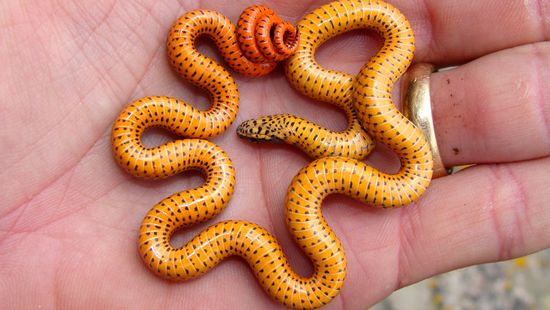
10 Cutest Snake Species That Have Us Squeeing

10 Colorful Lizards to Delight Reptile Lovers
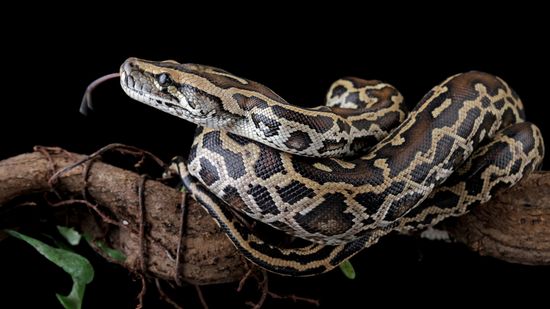
Python vs. Anaconda: Comparing Snakes and Software Languages
Learn More / Page 9
When it comes to spiky animals, hedgehog vs. porcupine species seem easy to confuse on paper. At first glance, they seem similar, both covered in sharp quills that help them defend against predators.
By Ada Tseng
When it comes to wild canines, coyote vs. fox identification can be tricky. At first glance, both coyotes and foxes may look similar with their bushy tails and pointed ears. But these two animals have plenty of key differences, including size, behavior, habitat and even how they hunt.
By Mack Hayden
Alligators are some of nature’s oldest prehistoric predators. But what do alligators eat, and what is an alligator's natural prey?
By Talon Homer
Advertisement
Elk vs. moose comparisons are a lot easier to make when you realize that two of the largest members of the deer family differ significantly in size, behavior and appearance.
By Talon Homer
Birds of prey are some of nature’s most fascinating creatures, but when it comes to buzzard vs. vulture species, things can get a little confusing.
By Zach Taras
An adult horse should typically eat about 1.5 to 2 percent of its body weight in food each day. This means a 1,000-pound (454-kilogram) horse may eat 15 to 20 pounds (6.8 to 9 kilograms) of hay and grass daily.
By Ada Tseng
Gorillas — one of the most powerful great apes — have a diet that might surprise you. Even though they’re massive and strong, their meals consist mostly of plants. But let's get specific: What do gorillas eat in the wild, and how do their diets change depending on where they live?
By Talon Homer
Advertisement
Two of the largest flightless birds on the planet may look similar but they typically live on different continents and have evolved unique adaptations for survival. How are your emu vs. ostrich identification skills?
By Talon Homer
If you're into marine oddities, few animals capture the imagination quite like the hairy frogfish. This bizarre, underwater ambush predator may look like a ball of algae, but don't be fooled: It's a master of camouflage and a nightmare for unsuspecting prey.
Ah, the great marmot vs. groundhog distinction. These two burrowing, chubby members of the squirrel family that are often mistaken for the same animal.
By Talon Homer
Turkeys have become a traditional dish to eat during Thanksgiving festivities. But have you ever wondered, what do turkeys eat?
By Ada Tseng
Advertisement
Goats are endlessly curious animals famous for their ability to eat just about anything — but don't be fooled. A goat's diet isn't just about munching on random objects; it requires careful balance to keep all the goats healthy and thriving. So, what do goats eat, really?
By Yara Simón
How do you identify a locust vs. grasshopper? They both belong to the grasshopper family (Acrididae), have powerful hind legs for jumping and share many physical traits. Despite their similarities, these two insects exhibit key behavioral and physiological differences that set them apart — especially when it comes to their ability to form massive, crop-devastating swarms.
By Mack Hayden
When it comes to big cats, jaguar vs. leopard identification can be tricky due to the animals' similar spotted coats. However, these wild cats belong to separate species within the genus Panthera and have distinct differences in appearance, behavior and habitat.
By Mack Hayden
The most colorful birds come in such dazzling hues that they are often the subject of artists and photographers.
By Ada Tseng
Advertisement
Whether they're prowling the forest floor or basking in the sun, big lizards are fascinating creatures. They come in all shapes and sizes, with some being land-dwelling behemoths and others being arboreal species that rule the treetops.
By Yara Simón
This adorable sea slug (also called a leaf slug or sea sheep) is one of the most unique examples of marine life on Earth. Similar to mollusks and other nudibranch species, these little guys spend most of their lives crawling slowly along the sea floor in warm, shallow waters without a care in the world.
By Mitch Ryan
The largest bird of prey is a raptor that dominates the air with its massive wingspan, incredible strength and razor-sharp talons. The biggest birds aren't just impressive because of their size; they're also some of the most powerful predators in the avian world, from the highest peaks of South America to the vast forests of Asia.
By Yara Simón
The green anaconda — scientific name Eunectes murinus — is the heaviest snake species on our planet. These colossal serpents slither through the waterways of South America, captivating our imaginations with their immense size and power.
By Yara Simón
Advertisement
When you think of rodents, you might think of tiny mice running through your cellar or the adorable hamster that was your 5th grade class pet.
By Ada Tseng
Octopuses are known their eight legs, squishy bodies and impressive problem-solving skills. But did you know there are over 300 types of octopus species?
By Ada Tseng
Octopuses are cephalopods that have three hearts and eight arms that are covered with suckers. The largest octopus is the giant Pacific octopus. As its name suggests, the Giant Pacific Octopus lives in the North Pacific Ocean.
By Ada Tseng
There are about 200 documented species of jellyfish pulsing their way through the world's waters. Most range from the size of your belly button to the size of a car tire.
Advertisement
The animal kingdom is home to some truly slow-moving creatures that take life at a leisurely pace. The slowest animal in the world uses sluggish movements that require less energy, which is crucial for animals with limited food resources. Being so slow that they look completely still is a good strategy to hide from vicious predators.
By Ada Tseng
Polar bears are one of the largest mammals on land; only the African elephant can tower over the polar bear in this corner of the animal kingdom. But how do you measure the biggest bear? By height or by weight?
By Ada Tseng
